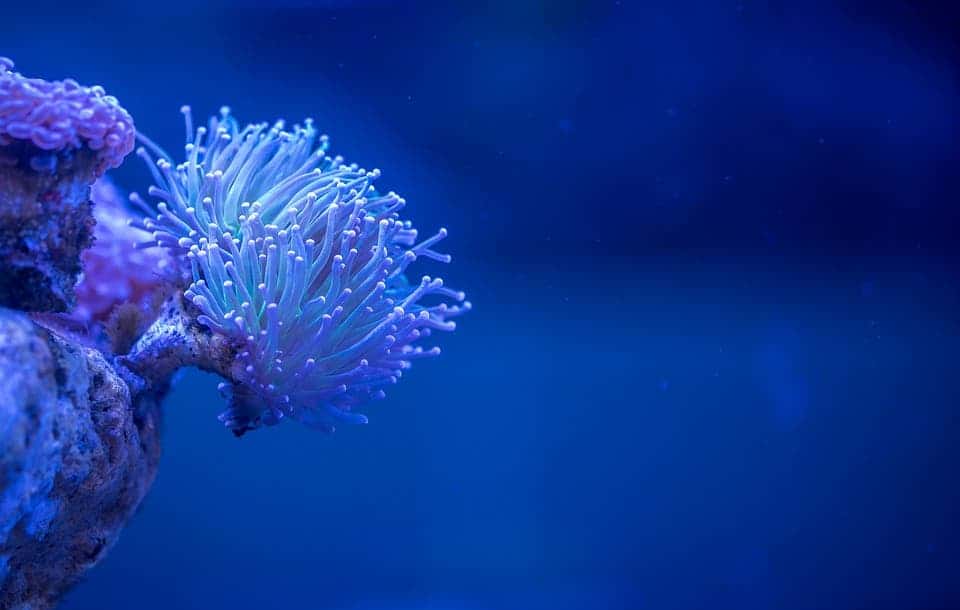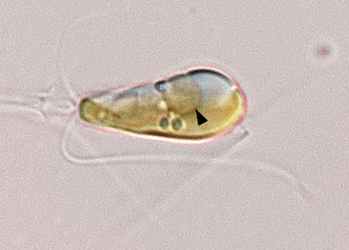New research is looking into what makes algae ‘move in’ with their coral hosts — and why the partnership can turn sour, both under normal conditions and when temperatures increase.

Image credits Егор Камелев.
What we know as corals aren’t really alive. They are large exoskeletons built by tiny animals called polyps. Tiny but industrious, these polyps work tirelessly to create the world’s wonderfully colorful coral reefs. A polyp has a sac-like body that ends in a mouth crowned with stinging tentacles called nematocysts (or cnidae). These animals filter calcium and carbonate ions from seawater that they combine to form the limestone (calcium carbonate) they use to build corals that protect their soft, defenseless bodies. If you ever get a chance to visit a coral reef at night, you’ll see these polyps extend their tentacles out to feed.
However, none of this would be possible without the help of various species of single-celled algae we call zooxanthellae, a type of dinoflagellate. These algae live in symbiosis with the polyps, taking up residence inside their cells in a mutually-beneficial relationship: the algae produce nutrients via photosynthesis, while polyps supply the raw materials. The algae are also what gives coral their dazzling colors, which brings us neatly to the subject of:
Bleaching
Warmer mean ocean temperatures (due to anthropic climate change) can apply so much thermal stress on the polyps that they ‘evict’ their symbiotic bacteria in a phenomenon called bleaching. We refer to it this way because, as the algae get expelled, the coral skeletons revert to their natural color: bone-white. If the bleached coral is not recolonized with new algae soon, however, it can die.
“We’re interested in understanding the cellular processes that maintain those preferential relationships,” says Arthur Grossman from the Carnegie Institution for Science, one of the paper’s co-authors.
“We also want to know if it’s possible that more heat tolerant, non-preferred algae could revive bleached coral communities even if the relationship is less efficient.”
The team focused on sea anemones, which are actually closely related to coral (they’re both part of the phylumCnidaria). Sea anemones also host algae, but are easier to work with than corals. The researchers looked at the differences in cellular function that occur when Exaiptasia pallida, a type of anemone, is colonized by two different types of algae — one native strain that is susceptible to thermal bleaching (Breviolum minutum), the other non-native but more resistant to heat (Durusdinium trenchii).
“In this study we hoped to elucidate proteins that function to improve nutrient exchange between the anemone and its native algae and why the anemone’s success is compromised when it hosts the non-native heat resistant algae,” Grossman said.
The anemones colonized by the native algae strain expressed heightened levels of proteins associated with the metabolism of organic nitrogen and lipids. Both are nutrients that get synthesized through the algae’s photosynthetic activity. These anemones also synthesized a protein called NPC2-d, which is believed to underpin the cnidarians’ ability to take in algae and recognize them as a symbiotic partner.
Anemones colonized by non-native algae species expressed proteins associated with stress, the team explains. This is likely indicative of a less-than-ideal integration between the metabolisms of the two organisms, they add.
“Our findings open doors to future studies to identify key proteins and cellular mechanisms involved in maintaining a robust relationship between the alga and its cnidarian host and the ways in which the metabolism of the organisms are integrated,” Grossman concluded.
The results can be used to further our understanding of the biochemical mechanisms that facilitate successful interactions between algae species and the corals that house them. Researchers can explore the metabolic pathways identified in this study to potentially find ways to merge corals with more heat-resistant species — all in a bid to help them both survive in the warmer world we’re creating on Earth.
The paper “Proteomics quantifies protein expression changes in a model cnidarian colonised by a thermally tolerant but suboptimal symbiont” has been published in the journal Nature.






